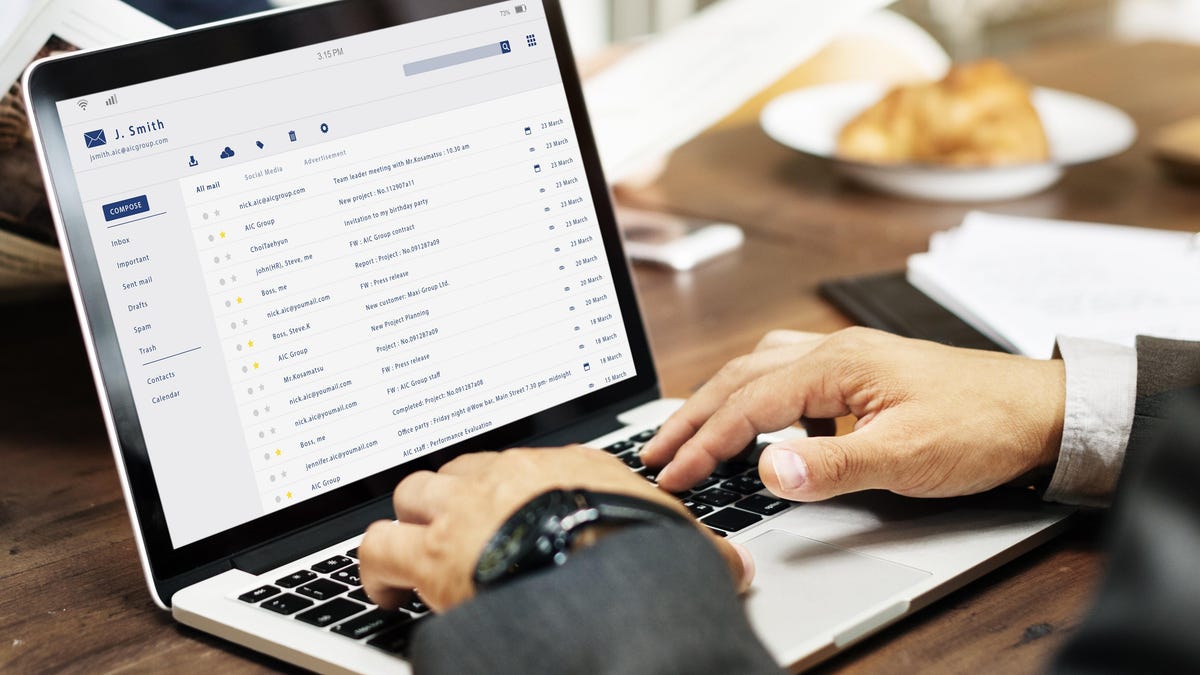These Are the Most Savage Ways to Start or End an Email
How do you begin your work emails? Do you go with a simple “Hey?” Or are you into formal greetings like “Good afternoon?” or “Salutation, right, trusty, and well-beloved friend?” Or are you one of those absolute animals that...

How do you begin your work emails? Do you go with a simple “Hey?” Or are you into formal greetings like “Good afternoon?” or “Salutation, right, trusty, and well-beloved friend?” Or are you one of those absolute animals that just starts—with no foreplay at all? How about the closing? Are you one of those annoying, “Thank you in advance” people? Or are you more like, “Byeeeeee?”
Back in the pre-computer days, this wouldn’t be a question. There were hard-and-fast rules for business correspondence: You started the letter with “Dear, Mr. Jenkins,” and ended it with, “Sincerely yours.” Anything else would mark you as a communist or beatnik.
Then email hit the scene. At first, it was widely used for informal work communication—serious business-y business was still put down on paper. But now, no one write letters for work, and there are even more informal ways for us to communicate. Email is in a gray-area. Everyday work-words are sent through text messages or Slack, and email is reserved for more “serious” buisness—but it still isn’t exactly formal, and there aren’t any universally accepted rules. This leaves everyone free to start and end emails however they want. But we still judge each other for the choices we make.
According to research from online tutoring company Preply.com, 46% of those surveyed report that they can tell a coworker’s mood based on their greetings and sign-offs, but only a third of those same people think about how they start and end their own emails. You should be one of the people who thinks about it, at least enough to understand how you’re coming off to your co-workers.
How most people start their work emails
According to the survey, “Hi [NAME]” is the most common opening for work emails, with 67% of respondents saying they have used it. This makes sense. “Hi, Gary” is reassuring in a work context. It’s not overly familiar nor overly formal, and it briefly acknowledges the recipient’s humanity before launching into whatever mundane drudgery occasioned the communication. “Hi, Gary” says, “We’re all in this together.”
A greeting like, “Good afternoon, Gary,” (second most-used at 19%) sends a different message. It gets your attention, but in a worrisome way. It reads like someone in authority wrote it and there’s something serious coming next. “Good Afternoon, Gary,” will likely be followed by something like, “What’s the status of the TPS reports? They should have been filed on Tuesday. Thanks in advance.”
“Hey” without a name is the least-used email greeting, and for good reason. I can’t define exactly why it’s so different from “Hi”—It means the same thing and sounds almost the same— but “Hey” comes off as dismissive and perfunctory. It’s what you say to someone you’re frustrated with. You have to start the email with something, so you’re going with a begrudging “Hey,” instead of just skipping the greeting altogether.
How most people end their work emails
More than three quarters of respondents consider the opening of an email more important than the closing. I’m sure a lot of people just skip over the “Thanks” at the end, but it’s still the final impression you leave on the reader. Most people seem to want to keep that impression as innocuous as possible: 80% have used a simple “Thank you.” That’s probably the correct sign-off for most emails—like starting with “Hi, Gary,” it’s a brief acknowledgment of shared humanity without further implications.
“Kind regards” is at the bottom of the list, with only 16% of people having used it. It sounds formal, old-fashioned, and oddly personal. It’s jarring in the context of a work email.
41% of respondents report ending work emails with “thanks in advance.” This one can seem passive-aggressive, like an order couched as courtesy. That’s how readers-of-emails tend to see it, too. “Thanks in advance” is rated as the third “most savage” sign-off, according to the survey.
Email’s most savage opening and closing: nothing
The absolute most savage opening and closing is the same: Nothing. No little greeting or sign-off at all; just launching into it with no warning and ending it when the message is finished. I get why people find this off-putting in some cases—it’s subtly failing to acknowledge the person receiving the email as a person—but to me it depends on who is sending the message. Some co-workers are minimalist, get-down-to-business types. For them, greetings and endings are time wastes. A name followed by a colon is way more “savage,” even if it’s only third on the list (behind “hiya,”). A name with a colon always sends a message, no matter who writes it. An email that starts “Gary:” is not going to end with, “We’re giving you a raise.”
Emojis and exclamation points
A shockingly high percentage of people—58%—believe emojis are appropriate in work emails. As in any kind of communication, “correct” depends on the audience, but emojis seem too informal for work. They’re fine in texts and or Google Teams, but in work emails, they come off as childish. I know the norms are changing, but in 2023, no one is likely to look down on you for not using emojis, where some people, older ones especially, might think you’re childish and unserious for adding that little poop guy. Plus, the meaning of emojis can depend on age and culture, so you won’t really know if your message is being received as intended.
Weirdly, people are more likely to approve of emojis in work emails than exclamation points. Forty-eight percent of respondents report that they re-read emails and remove exclamation points. But 25% add exclamation points. Are you an adder or a subtracter? I’m an adder—and I hate it. I use exclamation points sparingly in anything I write, but I sometimes feel obligated to “soften” formal sounding sentence in work email. It seems more friendly to write “I really enjoyed Gary’s retirement party!” Instead of “I really enjoyed Gary’s retirement party.” But while I’m doing it, I’m thinking, “This isn’t how exclamation points work.”
One thing I think we can all agree on: Closing your email with “Sent from my iPhone” or similar is not good. A little more than half of survey respondents want people to stop this entirely, and 65% object to: “Sent from my phone, please excuse typos.”

 JimMin
JimMin 































